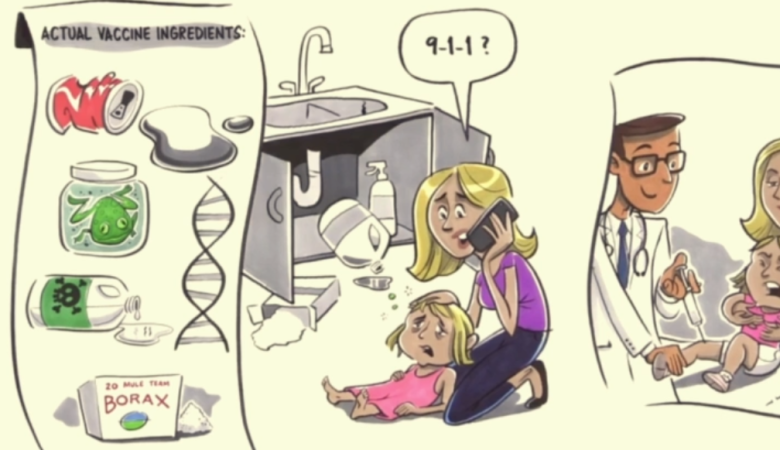This National Institutes of Health published report quotes over 67 published medical research reports.
Here are the highlights from this report.
FULL REPORT can be found on US National Library of Medicine – National Institutes of Health website
Breathing Physiology
Breathing is one of the most important physiological functions to sustain life and health. Human body requires a continuous and adequate oxygen (O2) supply to all organs and cells for normal function and survival. Breathing is also an essential process for removing metabolic byproducts [carbon dioxide (CO2)] occurring during cell respiration [12], [13]. It is well established that acute significant deficit in O2 (hypoxemia) and increased levels of CO2 (hypercapnia) even for few minutes can be severely harmful and lethal, while chronic hypoxemia and hypercapnia cause health deterioration, exacerbation of existing conditions, morbidity and ultimately mortality [11], [20], [21], [22]. Chronic mild or moderate hypoxemia and hypercapnia such as from wearing facemasks resulting in shifting to higher contribution of anaerobic energy metabolism, decrease in pH levels and increase in cells and blood acidity, toxicity, oxidative stress, chronic inflammation, immunosuppression and health deterioration [24], [11], [12], [13].
Efficacy of facemasks
The physical properties of medical and non-medical facemasks suggest that facemasks are ineffective to block viral particles due to their difference in scales [16], [17], [25]. According to the current knowledge, the virus SARS-CoV-2 has a diameter of 60 nm to 140 nm [nanometers (billionth of a meter)] [16], [17], while medical and non-medical facemasks’ thread diameter ranges from 55 µm to 440 µm [micrometers (one millionth of a meter), which is more than 1000 times larger than a virus particle [25]. Due to the difference in sizes between SARS-CoV-2 diameter and facemasks thread diameter (the virus is 1000 times smaller), SARS-CoV-2 can easily pass through any facemask
Clinical scientific evidence challenges further the efficacy of facemasks to block human-to-human transmission or infectivity.
A randomized controlled trial (RCT) of 246 participants [123 (50%) symptomatic)] who were allocated to either wearing or not wearing surgical facemask, assessing viruses transmission including coronavirus [26]. The results of this study showed that among symptomatic individuals (those with fever, cough, sore throat, runny nose ect…) there was no difference between wearing and not wearing facemask for coronavirus droplets transmission of particles of >5 µm. Among asymptomatic individuals, there was no droplets or aerosols coronavirus detected from any participant with or without the mask, suggesting that asymptomatic individuals do not transmit or infect other people [26]. This was further supported by a study on infectivity where 445 asymptomatic individuals were exposed to asymptomatic SARS-CoV-2 carrier (been positive for SARS-CoV-2) using close contact (shared quarantine space) for a median of 4 to 5 days. The study found that none of the 445 individuals was infected with SARS-CoV-2 confirmed by real-time reverse transcription polymerase [27].
A meta-analysis among health care workers found that compared to no masks, surgical mask and N95 respirators were not effective against transmission of viral infections or influenza-like illness based on six RCTs [28]. Using separate analysis of 23 observational studies, this meta-analysis found no protective effect of medical mask or N95 respirators against SARS virus [28]. A recent systematic review of 39 studies including 33,867 participants in community settings (self-report illness), found no difference between N95 respirators versus surgical masks and surgical mask versus no masks in the risk for developing influenza or influenza-like illness, suggesting their ineffectiveness of blocking viral transmissions in community settings [29].
In early publication the WHO stated that “facemasks are not required, as no evidence is available on its usefulness to protect non-sick persons” [14]. In the same publication, the WHO declared that “cloth (e.g. cotton or gauze) masks are not recommended under any circumstance” [14].
Conversely, in later publication the WHO stated that the usage of fabric-made facemasks (Polypropylene, Cotton, Polyester, Cellulose, Gauze and Silk) is a general community practice for “preventing the infected wearer transmitting the virus to others and/or to offer protection to the healthy wearer against infection (prevention)” [2]. The same publication further conflicted itself by stating that due to the lower filtration, breathability and overall performance of fabric facemasks, the usage of woven fabric mask such as cloth, and/or non-woven fabrics, should only be considered for infected persons and not for prevention practice in asymptomatic individuals [2].
The Central for Disease Control and Prevention (CDC) made similar recommendation, stating that only symptomatic persons should consider wearing facemask, while for asymptomatic individuals this practice is not recommended [31].
Consistent with the CDC, clinical scientists from Departments of Infectious Diseases and Microbiology in Australia counsel against facemasks usage for health-care workers, arguing that there is no justification for such practice while normal caring relationship between patients and medical staff could be compromised [32].
Moreover, the WHO repeatedly announced that “at present, there is no direct evidence (from studies on COVID-19) on the effectiveness face masking of healthy people in the community to prevent infection of respiratory viruses, including COVID-19”[2]. Despite these controversies, the potential harms and risks of wearing facemasks were clearly acknowledged. These including self-contamination due to hand practice or non-replaced when the mask is wet, soiled or damaged, development of facial skin lesions, irritant dermatitis or worsening acne and psychological discomfort.
Physiological effects of wearing facemasks
Wearing facemask mechanically restricts breathing by increasing the resistance of air movement during both inhalation and exhalation process [12], [13]. Although, intermittent (several times a week) and repetitive (10–15 breaths for 2–4 sets) increase in respiration resistance may be adaptive for strengthening respiratory muscles [33], [34], prolonged and continues effect of wearing facemask is maladaptive and could be detrimental for health [11], [12], [13].
In normal conditions at the sea level, air contains 20.93% O2 and 0.03% CO2, providing partial pressures of 100 mmHg and 40 mmHg for these gases in the arterial blood, respectively. These gas concentrations significantly altered when breathing occurs through facemask. A trapped air remaining between the mouth, nose and the facemask is rebreathed repeatedly in and out of the body, containing low O2 and high CO2 concentrations, causing hypoxemia and hypercapnia [35], [36], [11], [12], [13]. Severe hypoxemia may also provoke cardiopulmonary and neurological complications and is considered an important clinical sign in cardiopulmonary medicine [37], [38], [39], [40], [41], [42].
Low oxygen content in the arterial blood can cause myocardial ischemia, serious arrhythmias, right or left ventricular dysfunction, dizziness, hypotension, syncope and pulmonary hypertension [43]. Chronic low-grade hypoxemia and hypercapnia as result of using facemask can cause exacerbation of existing cardiopulmonary, metabolic, vascular and neurological conditions [37], [38], [39], [40], [41], [42]. Table 1 summarizes the physiological, psychological effects of wearing facemask and their potential long-term consequences for health.

In addition to hypoxia and hypercapnia, breathing through facemask residues bacterial and germs components on the inner and outside layer of the facemask. These toxic components are repeatedly rebreathed back into the body, causing self-contamination. Breathing through facemasks also increases temperature and humidity in the space between the mouth and the mask, resulting a release of toxic particles from the mask’s materials [1], [2], [19], [26], [35], [36]. A systematic literature review estimated that aerosol contamination levels of facemasks including 13 to 202,549 different viruses [1]. Rebreathing contaminated air with high bacterial and toxic particle concentrations along with low O2 and high CO2 levels continuously challenge the body homeostasis, causing self-toxicity and immunosuppression [1], [2], [19], [26], [35], [36].
The adverse physiological effects were confirmed in a study of 53 surgeons where surgical facemask were used during a major operation. After 60 min of facemask wearing the oxygen saturation dropped by more than 1% and heart rate increased by approximately five beats/min [45].
Another study among 158 health-care workers using protective personal equipment primarily N95 facemasks reported that 81% (128 workers) developed new headaches during their work shifts as these become mandatory due to COVID-19 outbreak. For those who used the N95 facemask greater than 4 h per day, the likelihood for developing a headache during the work shift was approximately four times higher [Odds ratio = 3.91, 95% CI (1.35–11.31) p = 0.012], while 82.2% of the N95 wearers developed the headache already within ≤10 to 50 min [46].
With respect to cloth facemask, a RCT using four weeks follow up compared the effect of cloth facemask to medical masks and to no masks on the incidence of clinical respiratory illness, influenza-like illness and laboratory-confirmed respiratory virus infections among 1607 participants from 14 hospitals [19]. The results showed that there were no difference between wearing cloth masks, medical masks and no masks for incidence of clinical respiratory illness and laboratory-confirmed respiratory virus infections. However, a large harmful effect with more than 13 times higher risk [Relative Risk = 13.25 95% CI (1.74 to 100.97) was observed for influenza-like illness among those who were wearing cloth masks [19]. The study concluded that cloth masks have significant health and safety issues including moisture retention, reuse, poor filtration and increased risk for infection, providing recommendation against the use of cloth masks [19].
Long-Term health consequences of wearing facemasks
Long-term practice of wearing facemasks has strong potential for devastating health consequences. Prolonged hypoxic-hypercapnic state compromises normal physiological and psychological balance, deteriorating health and promotes the developing and progression of existing chronic diseases [23], [38], [39], [43], [47], [48], [57], [11], [12], [13]. For instance, ischemic heart disease caused by hypoxic damage to the myocardium is the most common form of cardiovascular disease and is a number one cause of death worldwide (44% of all non-communicable diseases) with 17.9 million deaths occurred in 2016 [57]. Hypoxia also playing an important role in cancer burden [58]. Cellular hypoxia has strong mechanistic feature in promoting cancer initiation, progression, metastasis, predicting clinical outcomes and usually presents a poorer survival in patients with cancer. Most solid tumors present some degree of hypoxia, which is independent predictor of more aggressive disease, resistance to cancer therapies and poorer clinical outcomes [59], [60]. Worth note, cancer is one of the leading causes of death worldwide, with an estimate of more than 18 million new diagnosed cases and 9.6 million cancer-related deaths occurred in 2018 [61].
With respect to mental health, global estimates showing that COVID-19 will cause a catastrophe due to collateral psychological damage such as quarantine, lockdowns, unemployment, economic collapse, social isolation, violence and suicides [62], [63], [64]. Chronic stress along with hypoxic and hypercapnic conditions knocks the body out of balance, and can cause headaches, fatigue, stomach issues, muscle tension, mood disturbances, insomnia and accelerated aging [47], [48], [65], [66], [67]. This state suppressing the immune system to protect the body from viruses and bacteria, decreasing cognitive function, promoting the developing and exacerbating the major health issues including hypertension, cardiovascular disease, diabetes, cancer, Alzheimer disease, rising anxiety and depression states, causes social isolation and loneliness and increasing the risk for prematurely mortality [47], [48], [51], [56], [66].Go to:
Conclusion
The existing scientific evidences challenge the safety and efficacy of wearing facemask as preventive intervention for COVID-19. The data suggest that both medical and non-medical facemasks are ineffective to block human-to-human transmission of viral and infectious disease such SARS-CoV-2 and COVID-19, supporting against the usage of facemasks. Wearing facemasks has been demonstrated to have substantial adverse physiological and psychological effects. These include hypoxia, hypercapnia, shortness of breath, increased acidity and toxicity, activation of fear and stress response, rise in stress hormones, immunosuppression, fatigue, headaches, decline in cognitive performance, predisposition for viral and infectious illnesses, chronic stress, anxiety and depression.
Long-term consequences of wearing facemask can cause health deterioration, developing and progression of chronic diseases and premature death. Governments, policy makers and health organizations should utilize prosper and scientific evidence-based approach with respect to wearing facemasks, when the latter is considered as preventive intervention for public health.
FULL REPORT can be found on US National Library of Medicine – National Institutes of Health website





Recent Comments